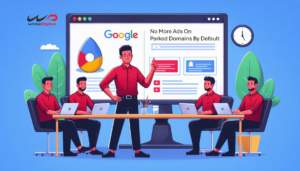Running low on money is one of the biggest problems when you want to market your business, and many people wonder whether Google Ads is still a worthwhile investment.
Spending money on ads is crucial in order to market your business and with limited resources, finding the best value for your spend is essential. In this blog, we will take a look at whether Google Ads can deliver results for low-budget campaigns.
Defining a Low Budget
When we talk about low-budget accounts, we are typically referring to ad spends below $5,000 per month—sometimes even as low as $1,000 or less. With that budget, relying on traditional search campaigns may not be practical. However, Google ads can still play a role, particularly in strategies like remarketing or branded search campaigns.
With Google ads, there is a greater opportunity in reaching a mass audience and even if you market it with a low budget, you are choosing to market to a huge audience.
By using search ads, you can capture a huge amount of traffic who search by intent. By utilising branded search, you solidify your online presence. Using ad assets like extensions you increase your ability to direct users to specific high-value services at no extra cost for clicks.
Cracking Opportunities with Dynamic Search Ads
Dynamic Search Ads (DSAs) offer another solution for small budgets. By allowing Google to match your website content to search queries, you can tap into new opportunities without committing to extensive keyword lists. Bid caps help keep costs in check, while targeting less competitive queries can stretch your budget further.
DSAs also provide valuable insights into how users search for your services, making it easier to refine your strategy over time. DSA allows you to get more opportunities and it’s a way you can attract more customers on the run.
Performance Max: The Volume Play
For advertisers looking to scale, Performance Max (PMax) campaigns can be a compelling option. They combine various ad formats, including display, video, and search, to optimize for conversions. However, it is important to implement exclusions for placements like YouTube and display to avoid wasting your budget on low-performing channels.
PMax campaigns work best when combined with other campaigns and that includes by strong conversion tracking. For low-budget accounts, allocating 15-20% of your budget to PMax could deliver meaningful results.
The Power of Video Campaigns
Video advertising is a cost-effective way to boost your reach and engagement without draining your budget. YouTube campaigns, in particular, allow for precise targeting and provide valuable audience data that can enhance your broader ad strategy.
By investing in non-skippable or in-sequence video ads, you can build brand awareness while collecting insights to inform future campaigns. Additionally, video audiences can be retargeted across other Google platforms, maximizing your ROI.
Exploring Alternatives
If Google Ads feels like a stretch, there are other platforms worth considering:
- Microsoft Advertising: A smaller but cost-effective alternative with features like impression-based remarketing and flexible ad settings. Microsoft Ads is a powerful platform that can help you attract the users you need.
- Meta Advertising: Ideal for small businesses with a focus on A/B testing and audience targeting, though it requires a reasonable testing budget. Meta advertising can help you play on a bigger scale.
- Amazon Advertising: Useful for sellers and non-sellers alike, with options for video and sponsored display ads. Amazon is a powerful platform that you can use in your favour.
Conclusion: Is Google Ads the Right Fit?
Google ads can deliver excellent value for low-budget accounts, but its success depends on several factors. Low-budget advertisers can find success with Google ads by focusing on strategic allocation and using a mix of campaign types. And if Google does not fit your needs, choosing alternatives like Microsoft, Meta, or Amazon could yield promising results.
There are alternatives that you can try and they can offer you big results. But it is the advertiser’s choice to pick what you think is best for your business.













